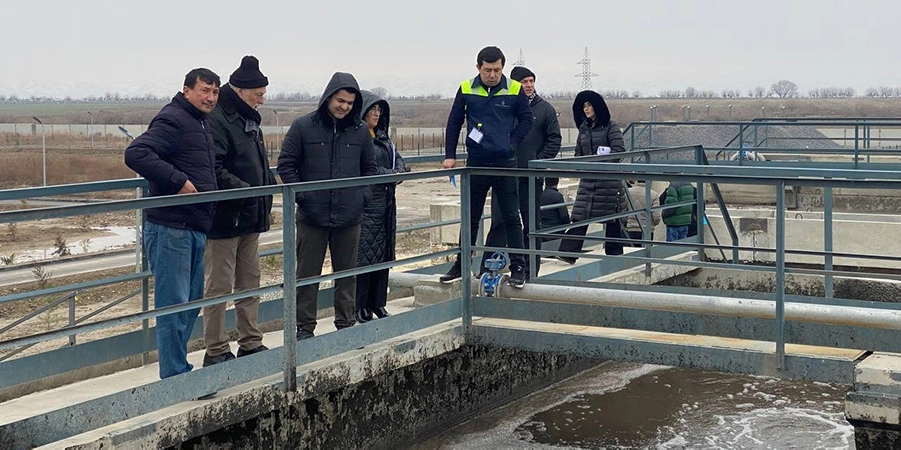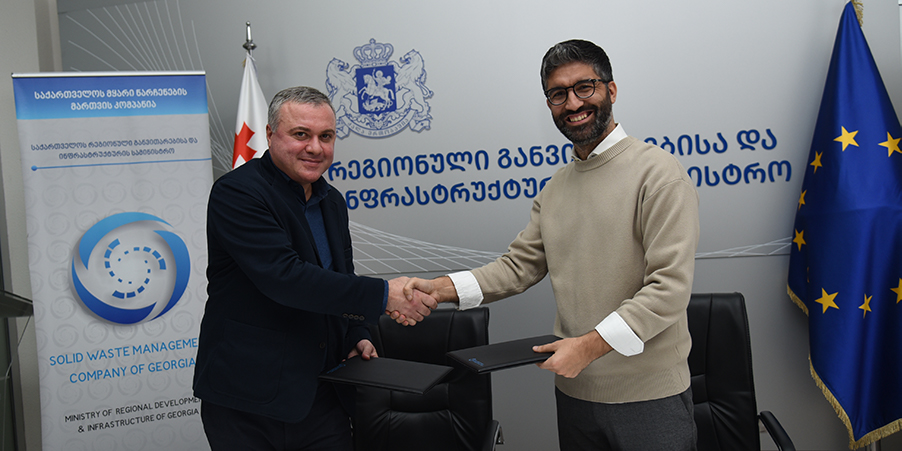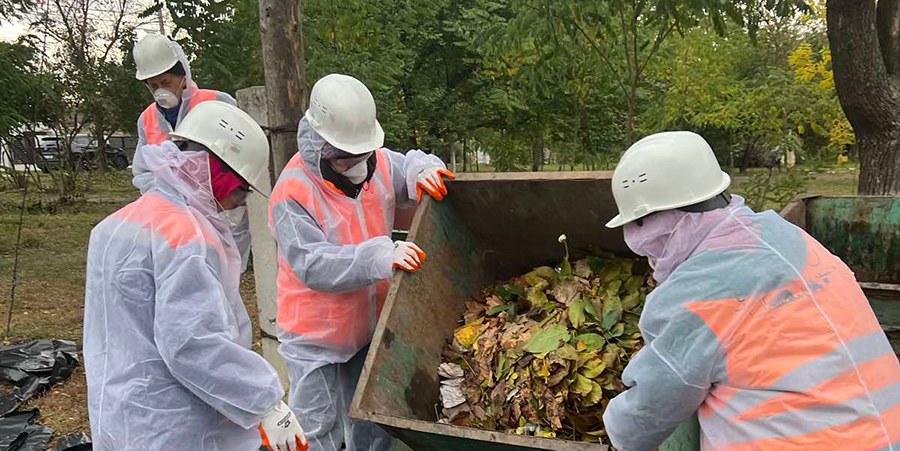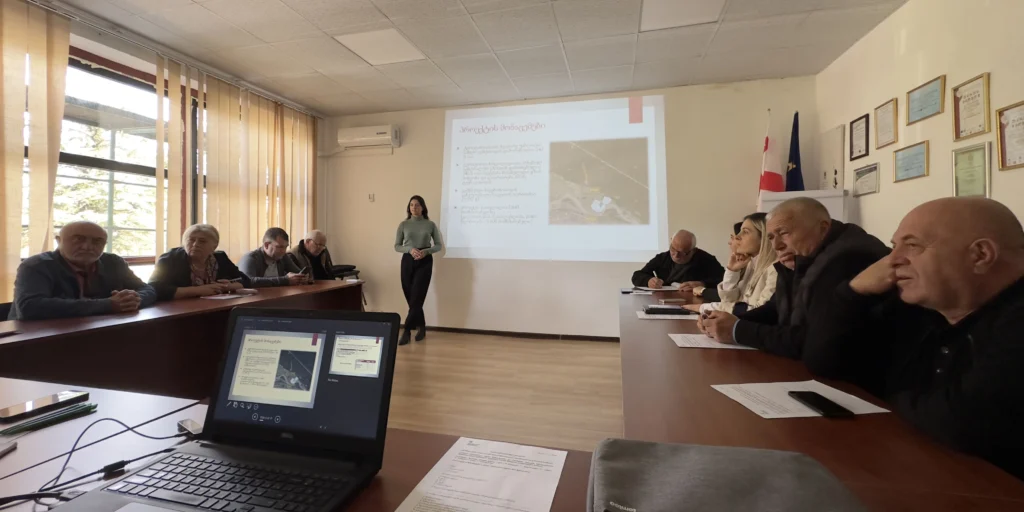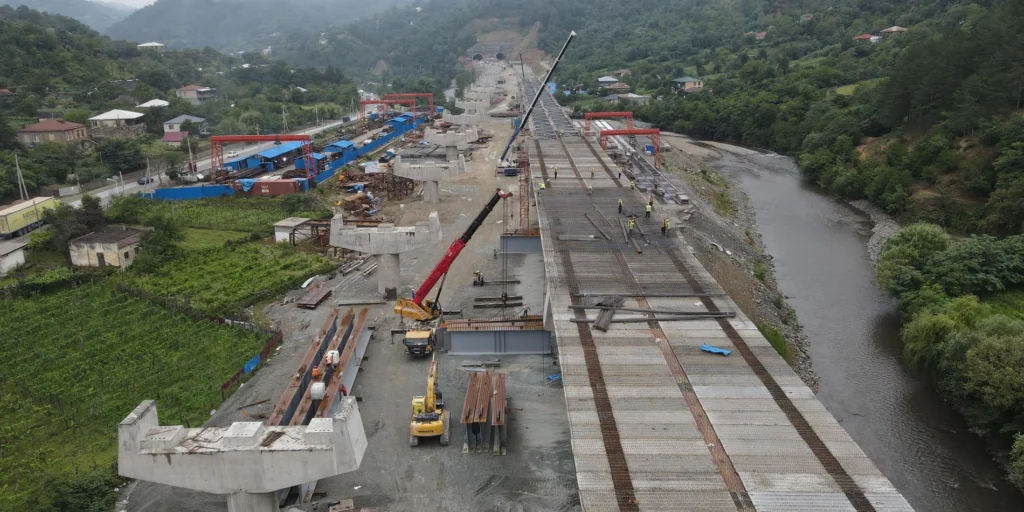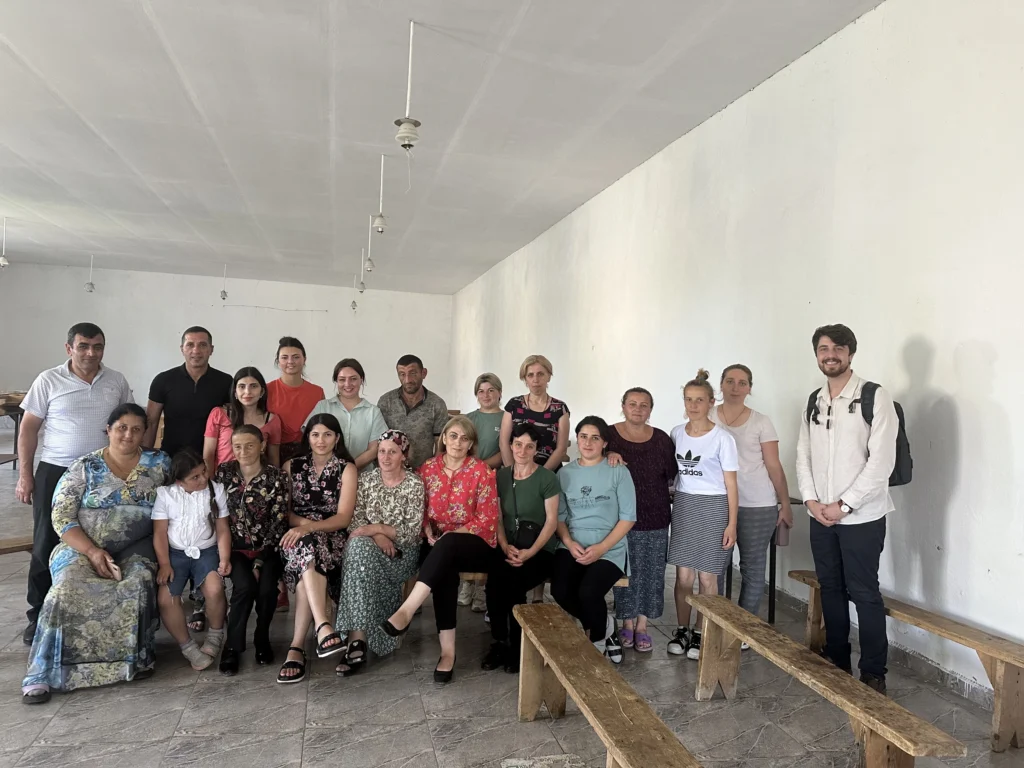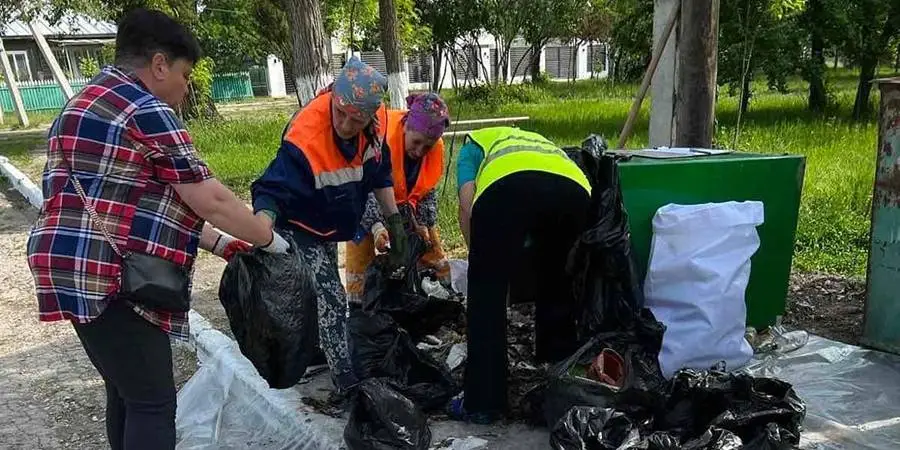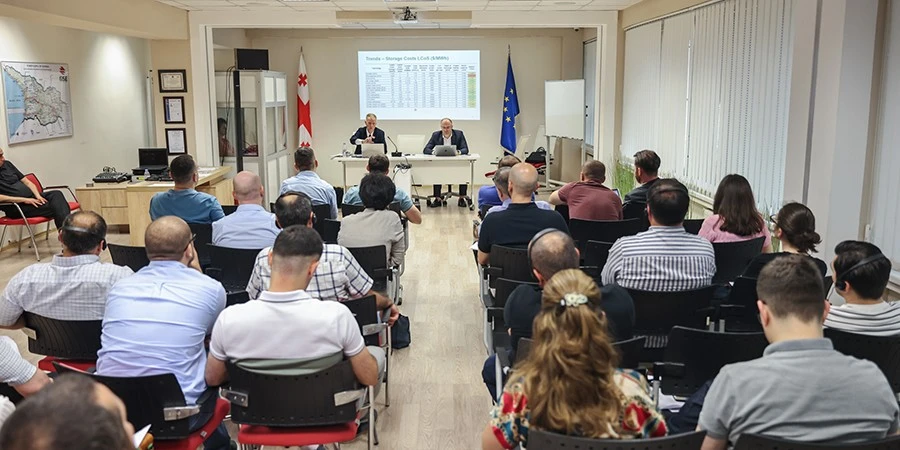The Role of Local Involvement in Infrastructure and Environment Project Development
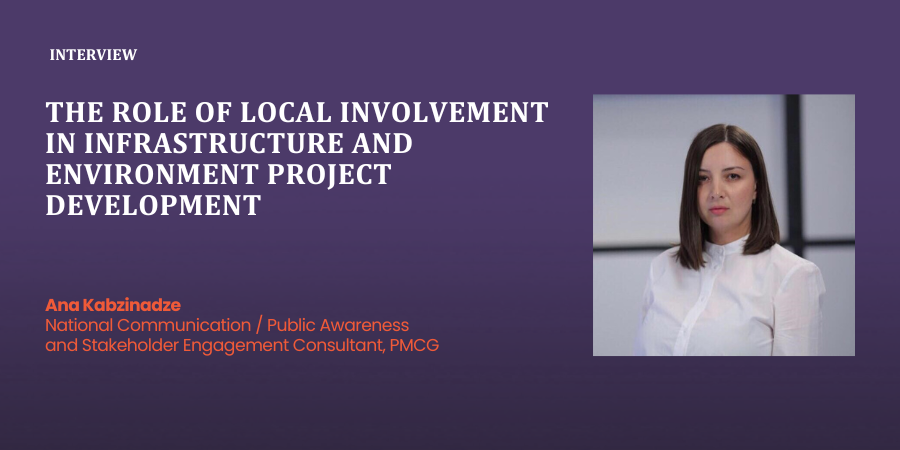

Interview with Public Awareness and Stakeholder Engagement Consultant Ana Kabzinadze
Ana Kabzinadze, National Communication / Public Awareness and Stakeholder Engagement Consultant at PMCG, has an impressive 15 years of expertise in projects of varying scale and in diverse areas, where engaging local residents has been crucial to their success.
Of note, as a consultant of PMCG, she has worked effectively on the Integrated Solid Waste Management Programme II – Kakheti and Samegrelo-Zemo Svaneti Regions, the Communal Infrastructure for Environment and Tourism Improvement, and the East-West Highway (Khevi-Ubisa Section) Improvement Project.
Further afield, she has also acquired valuable experience at the Austrian Development Agency, where she contributed to the GRETA Project on the green economy, sustainable mountain tourism, and organic agriculture, and assisted in various stages of the EU4Georgia initiative.
Seeking to gain Ana’s insights on the vital involvement of local residents in transformative projects, and other issues, we caught up with her for an enlightening interview in March 2024.
Q: Why is it crucial to involve local residents during project implementation, and how can their involvement lead to better outcomes?
Incorporating local citizens into the execution phase of initiatives is pivotal in securing results that align with the community’s core aspirations. Taking this inclusive approach ensures that the objectives resonate with local priorities too, thereby optimizing resource allocation and improving the relevance and impact of the outcomes achieved.
Moreover, gathering a wealth of local information and insights stands is imperative when designing activities and ensuring operational efficiency. Doing so addresses the unique environmental and infrastructural challenges, thereby heightening the initiative’s impact and sustainability.
Furthermore, local groups, when properly engaged, are inherently more willing to shield and sustain project investments, ensuring that the advantages reaped are long-lasting.
In addition, the integration of local views plays an essential role in mitigating potential resistance and fostering a sense of ownership among the populace. When individuals know that they’ve played a part in shaping initiatives, their assistance and exuberance increase, paving the way for harmonious and collaborative efforts to reach shared dreams. Thus, the active involvement of local citizens in implementation is fundamental to achieving sustainable, efficient, and community-focused outcomes.
Q: Despite the significance of involving locals, especially in environmental and infrastructure projects, there are cases where they may be reluctant to engage. How do you encourage their engagement?
Before deciding on the right approach, it is of the utmost importance to explore and clearly understand the reasons behind such reluctance. Only then can effective strategies be built to encourage engagement and the strategies.
First of all, it is important that communication is transparent. In particular, since infrastructural projects have large social influence, being honest and transparent can transform the process in a positive way, and ensure a greater sense of fairness and appreciation.
Second, decision-making should be inclusive as this forms a basis for open communication and the consideration of diverse perspectives, which will boost the effectiveness of the project outcomes.
Third, it’s wise to identify and engage with respected local leaders or influencers, so they can advocate for the project and facilitate dialogue with local residents.
Fourth, when appropriate, provide incentives for participation, that recognize the time and effort being committed by the local residents.
Q: Have you faced any skepticism from local residents regarding project outcomes, and, if so, how have you addressed that?
Coping with such skepticism requires being extremely transparent and open in your communication and focusing on the “selling points” of projects.
Here, continuous dialogue and direct engagement are key to generate influential and convincing narratives, particularly as such communication is directly aimed at fostering trust. This approach establishes a foundation for ongoing interaction, facilitating a deeper understanding and appreciation of the project objectives and methodologies.
Offering examples of successes or advantages is also important, so when engaging with a skeptical audience the focus should be on presenting clear, evidence-based information, ultimately transforming skeptics into advocates by demonstrating the tangible benefits of the project.
Honesty is also crucial, meaning you should outline potential challenges as well and actively seek to involve the locals in identifying and developing optimal solutions. This inclusive approach alleviates concerns and fosters a sense of community ownership and participation in the project’s success.
Q: How can the concerns and priorities of local residents be properly heard?
Enabling the active and open engagement of local residents requires a complex approach that emphasizes transparency, open communication, and inclusiveness. In many cases, a grievance mechanism is an integral part of the overall communication, establishing formal channels for feedback to ensure that local residents have multiple avenues to voice their concerns and share their suggestions. Such a mechanism allows for a systematic approach to collecting, addressing, and resolving complaints in a timely and respectful manner.
In addition, making participatory planning a part of the stakeholder engagement plan is shrewd, especially involving locals in planning sessions. Meanwhile, responsive action and explaining to locals when certain ideas may not be practical are similarly important. Furthermore, locals should be updated on a regular basis about the project’s progress, highlighting how community involvement has been helpful or even instrumental.
Q: What is the role of education and outreach in building support for environmental projects within local communities?
Education and outreach is vital in building support for environmental projects. On one hand, education serves as the foundation for fostering understanding of the environmental challenges, while outreach, on the other hand, means making such information available to as many locals as possible.
Effectively combining both approaches can raise awareness of local and global environmental contexts, boosts local knowledge about goals, methodologies, and expected outcomes, and can even generate behavioral change.
Q: Why are locals in some places more eager than others to engage?
There are several factors which can determine the extent of locals’ eagerness or reluctance.
Some such factors are cultural, where values and norms may encourage or discourage engagement. At the same time, past experiences of similar projects can also steer attitudes. In addition, if the perceived benefits of the project are clear to the local population, their engagement is more probable, and if the project team or organization has a trustworthy reputation this will also be helpful.
Overall, understanding the target audience and key influential factors are the cornerstones of successful communication with local residents. It is crucial to see things from their perspectives and consider these when building a communication strategy.
Q: What advice would you give to organizations or individuals looking to involve local residents in their environmental initiatives?
Based on accumulated experience of fostering effective engagement with local communities, the following are key tips to apply:
- Explore and analyze the target audience to understand the key factors shaping their beliefs, attitudes, and behaviors in relation to environmental issues and recognizing the community’s values, concerns, and specific challenges.
- Tailor communication and engagement approaches to identify methods that appeal to the lifestyle and preferences of the local community.
- Establish a stakeholder engagement system to allow the inclusive participation of significant groups, such as local communities. This facilitates openness and fosters a sense of ownership and partnership among stakeholders.
- Search for local resources and collaborative synergies to deepen engagement as part of an integrated approach to encourage collaborative efforts with existing community initiatives. This model not only broadens the project’s support base but also ensures that engagement strategies are grounded in the local reality, making them more relevant and effective.
- Keep theproject’s concept, key messages, and communication materials clear and understandable for the target audience. In many cases, complex and technical terms may alienate non-expert audiences so should be avoided.
- Communicate consistently and clearly, providing regular updates and feedback to help maintain engagement and build trust, and also adjust strategies based on community input.
- All information related to the project must be accessible to the community. This includes project objectives, expected outcomes, and how individuals can get involved. This can be achieved through various means, including online resources, community notice boards, and informational meetings.
